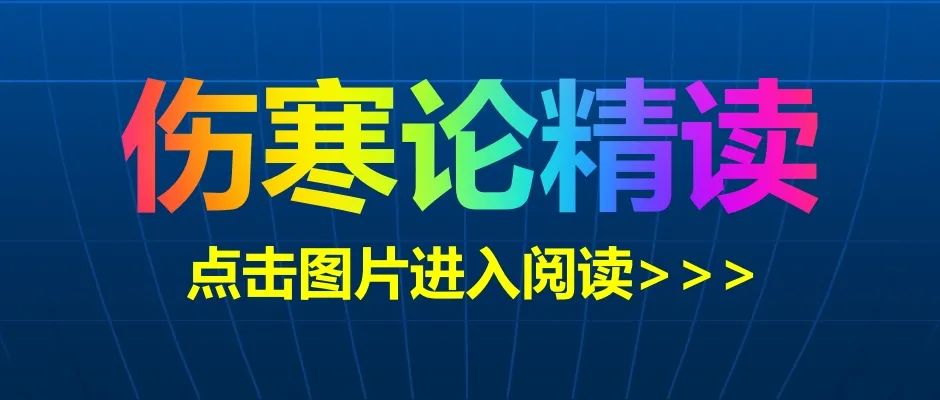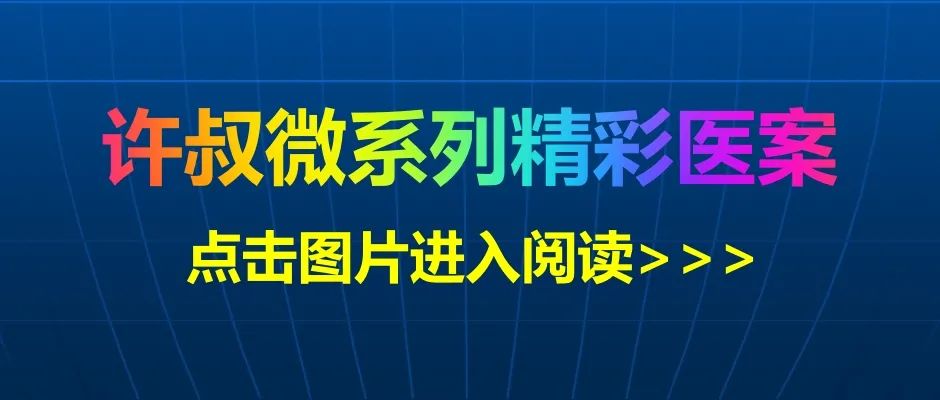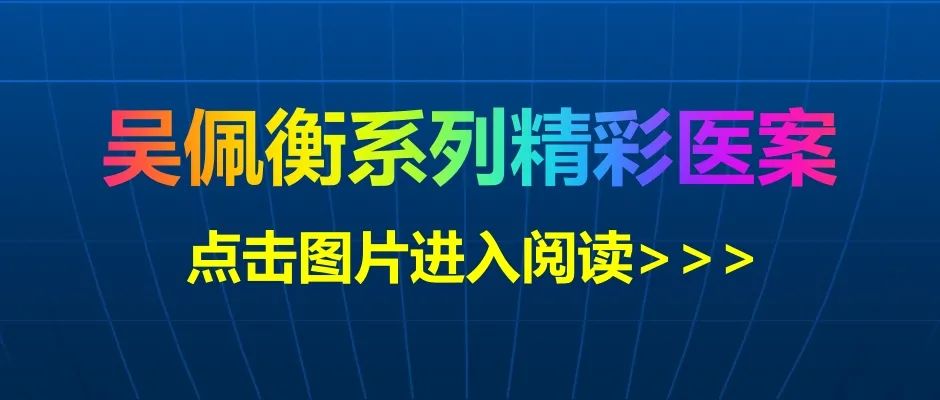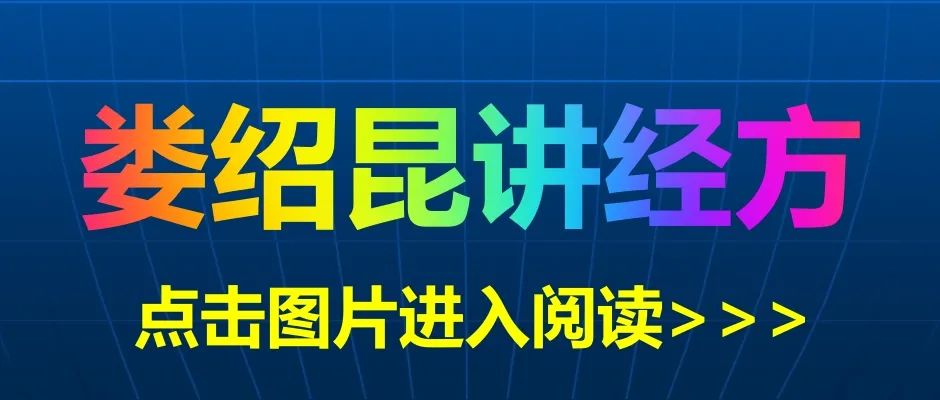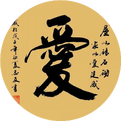Treatment of Damp-Heat Syndrome in the Middle Jiao (Part 3)
Continuing from the previous issue: Treatment of Damp-Heat Syndrome in the Middle Jiao (Part 2)
3. Heat Dominates Over Dampness1) Stomach Heat with Spleen DampnessClinical Manifestations: High fever, sweating, thirst with a preference for cold drinks, fullness in the chest, heaviness in the body, yellow greasy and dry tongue coating, and a large pulse. Pathogenesis Analysis: This syndrome is characterized by excessive heat in the Yangming Stomach, accompanied by dampness from the Taiyin Spleen. High fever, sweating, and thirst for cold drinks are manifestations of the heat in the Yangming Stomach. The Spleen governs the muscles, and the chest is located in the middle jiao, hence the fullness in the chest and heaviness in the body indicate the dysfunction of the Taiyin Spleen dampness. The yellow greasy and dry tongue coating indicates the internal accumulation of damp-heat, with heat being predominant. The pulse is large and not soft, indicating that heat is heavier than dampness. Treatment Method: Clear and drain Stomach heat, while also eliminating Spleen dampness. Prescription: Bai Hu Jia Cang Zhu Tang (White Tiger Decoction with Atractylodes) (from Wen Bing Tiao Bian) This is the Bai Hu Tang (White Tiger Decoction) with the addition of Cang Zhu (Atractylodes) 9g (for the Bai Hu Tang formula, refer to the previous section on “Heat in the Lung and Stomach”). Formula Discussion: This formula uses Bai Hu Tang, a pungent and cold remedy, to clear and drain Yangming Stomach heat, allowing the heat to exit through the surface. Cang Zhu is pungent and warm, drying dampness and also dispersing it, which can eliminate both exterior and interior dampness, relieving fullness in the chest and heaviness in the body. The combination of these herbs addresses both Yangming heat and Taiyin dampness, primarily focusing on clearing Yangming Stomach heat while also eliminating Taiyin Spleen dampness. Literature Excerpts: ① “For hand Taiyin heat with dampness, whether sweating has occurred or not, if sweating does not stop, with thirst and panting, a large and forceful pulse, Bai Hu Tang is indicated; … Heaviness in the body indicates dampness, Bai Hu Jia Cang Zhu Tang is indicated.” (from Wen Bing Tiao Bian, Upper Jiao Section, Article 26) ② “Damp-heat syndrome, with strong fever and thirst, spontaneous sweating and heaviness in the body, chest fullness, and a large and rapid pulse, indicates the combination of Taiyin dampness and Yangming heat, suitable for Bai Hu Jia Cang Zhu Tang.” (from Wen Re Jing Wei, Xue Sheng Bai Damp-Heat Disease, Article 37) Note: The first excerpt discusses the treatment of heat with dampness. The second excerpt discusses the treatment of damp-heat syndrome, indicating the combination of “Taiyin dampness and Yangming heat.” Both excerpts refer to the syndrome of heat being heavier than dampness in the middle jiao, treated with Bai Hu Jia Cang Zhu Tang, to clear heat and also eliminate dampness.2) Diffuse Summer Dampness Clinical Manifestations: Body heat, red face, sweating, thirst, dizziness, tinnitus, chest and abdominal fullness, nausea and vomiting, loose and foul-smelling stools, scanty yellow urine, yellow greasy tongue coating, and slippery rapid pulse. Pathogenesis Analysis: This syndrome is characterized by summer heat combined with dampness, diffusing through the three jiao. Body heat, red face, sweating, and thirst with scanty yellow urine indicate the internal accumulation of summer heat. Chest and abdominal fullness, nausea and vomiting, and loose foul-smelling stools indicate that damp-heat is centered in the Spleen and Stomach, diffusing through the three jiao, causing dysfunction in the movement of qi. Dizziness and tinnitus are due to heat disturbing the clear orifices. Yellow greasy tongue coating and slippery rapid pulse are signs of internal damp-heat accumulation. Treatment Method: Drain heat and benefit dampness, unblocking the three jiao. Prescription: San Shi Tang (Three Stone Decoction) (from Wen Bing Tiao Bian) Ingredients: Fei Hua Shi (Pumice) 9g, Sheng Shi Gao (Gypsum) 25g, Han Shui Shi (Cold Water Stone) 9g, Xing Ren (Apricot Kernel) 9g, Zhu Ru (Bamboo Shavings, toasted) 6g, Yin Hua (Honeysuckle) 9g (flower dew is even better), Jin Zhi (Golden Juice) 1 cup (for infusion), Tong Cao (Rice Paper Plant) 6g, water 5 cups, boil down to 2 cups, and take in two warm doses. Formula Discussion: Summer heat combined with dampness diffuses through the three jiao, thus treatment should clear and drain summer heat while also benefiting dampness, allowing the three jiao to be unblocked, so that the pathogen can be expelled. In this formula, Sheng Shi Gao clears heat from the upper and middle jiao, and also has a pungent and cold nature to release the exterior and expel heat. Han Shui Shi clears heat from the middle and lower jiao; the two stones work together to clear and drain the summer heat pathogen diffusing through the three jiao. Jin Zhi enhances the heat-clearing effect of the two stones. Yin Hua is aromatic, lightly clearing and dispersing, promoting the movement of qi, allowing the heat to be expelled. Together with the two stones and Jin Zhi, it applies both internal clearing and external dispersing to eliminate the summer heat pathogen. If using Yin Hua Lu (Honeysuckle Dew), it will cool and drain heat, and is more suitable than Yin Hua. Xing Ren enters the upper jiao, descending lung qi to regulate the water pathways. Hua Shi enters the lower jiao, clearing and benefiting damp-heat. Tong Cao lightly drains and benefits dampness; the three herbs work together to unblock the water pathways and promote the movement of qi to eliminate the damp pathogen diffusing through the three jiao. Zhu Ru clears heat, harmonizes the stomach, and stops vomiting, while also unblocking and relieving stagnation to eliminate summer dampness. The combination of these herbs clears summer heat while also benefiting dampness, making it a formula for treating the three jiao together. This syndrome is similar to the Xing Ren Hua Shi Tang syndrome, both belonging to the category of damp-heat diffusing through the three jiao. However, Xing Ren Hua Shi Tang emphasizes equal parts of dampness and heat, thus its formula includes Huang Qin, Huang Lian, Ju Hong, Ban Xia, Hou Po, to clear heat and dry dampness, along with Xing Ren, Hua Shi, Tong Cao, and Yu Jin, to unblock the water pathways of the three jiao and clear damp-heat. This syndrome emphasizes heat over dampness, thus focuses on using cold and cooling herbs to primarily drain summer heat from the three jiao, while also including Xing Ren, Hua Shi, and Tong Cao to unblock the water pathways and clear damp-heat. The two syndromes differ in the degree of emphasis on dampness and heat, thus their prescriptions and herbs also differ. However, Wu Ju Tong’s treatment of damp-heat diffusing through the three jiao specifically selects Xing Ren, Hua Shi, and Tong Cao, corresponding to the upper and lower jiao, to regulate the water pathways and expel damp-heat through urination, which is a precise approach worth emulating. Literature Excerpts: “For summer heat spreading through the three jiao, with a slippery and slightly yellow tongue, if the pathogen is in the qi level, San Shi Tang is indicated…” (from Wen Bing Tiao Bian, Middle Jiao Section, Article 41) Note: This section discusses the etiology, pathogenesis, and treatment of summer heat combined with dampness diffusing through the three jiao. The phrase “summer heat spreading through the three jiao” indicates that the primary pathogen is summer heat. The phrase “slippery and slightly yellow tongue” indicates that summer heat is also combined with dampness. The phrase “if the pathogen is in the qi level” indicates that summer heat combined with dampness diffuses through the three jiao, belonging to the qi level pathogen, without any signs of spirit disturbance or tongue changes in the nutrient or blood levels. If there are signs in the nutrient or blood levels, then San Shi Tang would not be appropriate. This section, aside from the “slippery and slightly yellow tongue,” does not mention other clinical manifestations, which is an omission; scholars already know that the syndrome belongs to summer heat combined with dampness, and by analyzing the herbs in San Shi Tang, various symptoms can be inferred without needing to elaborate further.3) Damp-Heat Stagnation in the Foot Shaoyang Gallbladder Clinical Manifestations: Alternating chills and fever, with more heat than cold, increased fever in the afternoon, irritability and thirst, chest and abdominal fullness, distension in the flanks, nausea and bitter taste in the mouth, difficulty urinating, yellow greasy tongue coating, and slippery rapid pulse. Pathogenesis Analysis: This syndrome is characterized by unresolved damp-heat in the middle jiao, obstructing the foot Shaoyang Gallbladder, with heat being predominant over dampness. Damp-heat stagnation leads to dysfunction in the Shaoyang, causing the defensive yang to fail to disperse to the surface, resulting in chills; while the yang becomes agitated, the pathogen and the righteous qi clash, leading to fever. If damp-heat is not eliminated, chills and fever will persist, hence the recurrent nature resembling malaria. Since this syndrome emphasizes heat over dampness, the fever is more pronounced while chills are milder. In the afternoon, the Yangming channel’s qi is strong, actively driving out the pathogen, thus the fever is more intense. Irritability is caused by heat disturbing the heart spirit, and thirst is a sign of heat damaging fluids. Damp-heat stagnation leads to fullness in the chest and abdomen, and distension in the flanks. The internal pressure of heat can cause the gallbladder qi to reverse, leading to a bitter taste. Damp-heat stagnation disrupts the stomach’s ability to descend, causing nausea and vomiting. Qi stagnation leads to difficulty urinating. Yellow greasy tongue coating and slippery rapid pulse are signs of internal damp-heat stagnation. Treatment Method: Clear and drain Shaoyang, disperse damp turbidity. Prescription: Hao Qin Qing Dan Tang (Artemisia and Scutellaria Gallbladder Clearing Decoction) (from Revised Popular Treatise on Cold Damage) Ingredients: Qing Hao (Artemisia Annua) 4.5-9g, Dan Zhu Ru (Bamboo Shavings) 9g, Xian Ban Xia (Pinellia) 4.5g, Chi Fu Ling (Red Poria) 9g, Qing Zi Qin (Green Scutellaria) 4.5-9g, Sheng Zhi Qiao (Fresh Bitter Orange) 4.5g, Chen Guang Pi (Dried Tangerine Peel) 4.5g, Bi Yu San (Jade Powder) 9g. Formula Discussion: This formula includes Qing Hao, which is bitter and cold, combined with Huang Qin and Zhu Ru, both bitter and cold, to clear and disperse heat from the Shaoyang Gallbladder, while also transforming damp turbidity and benefiting the qi mechanism. Ban Xia, Chen Pi, and Zhi Qiao work together to open up stagnation, transform dampness, and regulate the stomach to eliminate damp obstruction in the middle jiao and promote the movement of qi. Fu Ling strengthens the spleen and benefits dampness, while Bi Yu San clears damp-heat, guiding the damp-heat pathogen to be expelled through urination. The combination of these herbs clears and drains Shaoyang heat, while also benefiting the damp obstruction, promoting the movement of qi. This syndrome is similar to the Qin Lian Er Chen Tang syndrome, both belonging to damp-heat stagnation in the Shaoyang. However, Qin Lian Er Chen Tang emphasizes equal parts of dampness and heat, thus its treatment focuses on dispersing and draining, allowing damp-heat to be expelled through urination. This syndrome emphasizes heat over dampness, thus treatment focuses on using Qing Hao and Huang Qin as the main herbs to clear and disperse heat from the Shaoyang Gallbladder, while also including other herbs to disperse damp-heat. Literature Excerpts: “The foot Shaoyang Gallbladder, along with the hand Shaoyang Sanjiao, forms a single channel. Its qi transformation is concentrated in the gallbladder to transform water and grain, and it emerges in the three jiao to regulate the pores. If dampness obstructs and heat stagnates, the qi mechanism of the three jiao will be impaired, leading to gallbladder fire becoming intense. Therefore, Qing, Qin, and Zhu Ru are used as the main herbs to clear and drain gallbladder fire. If gallbladder fire is intense, it will affect the stomach, causing fluid stagnation and phlegm, thus Zhi Qiao and Er Chen are used to harmonize the stomach and transform phlegm. However, the qi mechanism of the lower jiao must be unblocked, so Bi Yu is added to guide the fire downwards, while Chi Fu Ling is used to expel damp-heat, allowing it to be eliminated through the bladder. This is an excellent formula for harmonizing the gallbladder channel; for symptoms of chest fullness and nausea, it is effective.” (from Revised Popular Treatise on Cold Damage, Hao Qin Qing Dan Tang Commentary by He Xiu Shan) Note: This section outlines the pathogenesis and treatment of damp-heat stagnation in the foot Shaoyang Gallbladder. The phrases “the foot Shaoyang Gallbladder, along with the hand Shaoyang Sanjiao, forms a single channel” and “if dampness obstructs and heat stagnates, the qi mechanism of the three jiao will be impaired, leading to gallbladder fire becoming intense” thoroughly analyze the close relationship between the two in terms of physiology and pathology. The gallbladder and the three jiao are both part of the Shaoyang. The gallbladder governs the smooth flow of qi, serving as a pivot for the movement of qi; the three jiao governs the transformation of qi, regulating the rise and fall of yang qi and water fluids. Therefore, if damp-heat in the three jiao is unresolved, the qi mechanism will be impaired, leading to gallbladder fire becoming intense, thus treatment of the gallbladder cannot be separated from the three jiao.4) Damp-Heat Jaundice Clinical Manifestations: Yellowing of the entire body and face, bright like orange, no sweating, or only sweating on the head with no sweating on the body, thirst with a desire to drink water, abdominal fullness and pain in the flanks, reduced appetite and nausea, difficulty urinating, yellow dry or greasy tongue coating, and slippery rapid pulse. Pathogenesis Analysis: This syndrome is characterized by unresolved damp-heat in the middle jiao, with heat being predominant over dampness, leading to the development of yang jaundice. Damp-heat stagnation leads to the gallbladder heat leaking into the skin, causing the entire body and face to turn yellow, bright like orange. Damp-heat obstructs the skin’s qi mechanism, hence despite having heat, sweating does not occur. The head is where all yang converges; damp-heat can cause sweating only on the head, but if the surface is obstructed, the body may not sweat. Thirst with a desire to drink water is due to heat damaging fluids. Abdominal fullness and pain in the flanks are signs of damp-heat stagnation and qi obstruction. Damp-heat stagnation disrupts the Spleen and Stomach’s ability to ascend and descend, leading to reduced appetite and nausea. Dysfunction in the three jiao’s qi transformation leads to difficulty urinating. Yellow dry or greasy tongue coating and slippery rapid pulse indicate internal damp-heat with heat being predominant over dampness. Treatment Method: Clear heat, benefit dampness, and resolve jaundice. Prescription: Yin Chen Hao Tang (Artemisia Jaundice Decoction) (from Wen Bing Tiao Bian) Ingredients: Yin Chen Hao (Artemisia) 18g, Zhi Zi (Gardenia) 9g, Sheng Da Huang (Rhubarb) 9g. Water 8 cups, first boil Yin Chen Hao to reduce the water by half, then add the other two ingredients, boil down to 3 cups, and take in three doses, adjusting for urination. Formula Discussion: In this formula, Yin Chen Hao is bitter and cold, clearing heat and benefiting dampness, promoting the movement of qi to eliminate jaundice, serving as the monarch herb. Zhi Zi unblocks the three jiao, guiding damp-heat to be expelled through urination. Sheng Da Huang clears heat and dries dampness, purging the bowels and eliminating stagnation. All three herbs are bitter and cold, working together to allow damp-heat to be expelled, thus jaundice can be resolved. Literature Excerpts: “For yang jaundice with no sweating or only sweating on the head, thirst with a desire to drink water, abdominal fullness, dry yellow tongue, and difficulty urinating, it must be jaundice; Yin Chen Hao Tang is indicated.” (from Wen Bing Tiao Bian, Middle Jiao Section, Article 28) Note: This section discusses the treatment of damp-heat jaundice.
I Copyright Statement
-
This article is excerpted from the Complete Works of Zhao Shaoqin
-
Author/Zhao Shaoqin. Compiled by Zhao Shaoqin Research Studio
-
Copyright belongs to the relevant rights holders. If there are any improper uses, please feel free to contact us.
-
If you like the works of Zhao Shaoqin, please support by purchasing genuine books. The reprint aims to promote classical medicine.
I Submission Email: [email protected]
Series on Warm Diseases [Click the text to read directly]::
| Introduction to Warm Diseases | Etiology, Pathogenesis, and Treatment of Warm Diseases |
| Overview of Warm Diseases | Classification and Differentiation of Warm Diseases |
| Warm Diseases – Treatment of Wei Level | Formation and Development of Warm Disease Theory |
| Warm Diseases – Treatment of Qi Level (1) | Warm Diseases – Treatment of Ying Level (1) |
| Warm Diseases – Treatment of Qi Level (2) | Warm Diseases – Treatment of Ying Level (2) |
| Warm Diseases – Treatment of Qi Level (3) | Warm Diseases – Treatment of Ying Level (3) |
| Warm Diseases – Treatment of Qi Level (4) | Warm Diseases – Treatment of Blood Level (1) |
| Warm Diseases – Treatment of Qi Level (5) | Warm Diseases – Treatment of Blood Level (2) |
| Warm Diseases – Treatment of Qi Level (6) | Warm Diseases – Treatment of Blood Level (3) |
| Damp-Heat Diseases Overview | Warm Diseases – Treatment of Blood Level (4) |
| Upper Jiao Damp-Heat Treatment (1) | |
| Upper Jiao Damp-Heat Treatment (2) | |
| Middle Jiao Damp-Heat Treatment (1) | |
| Middle Jiao Damp-Heat Treatment (2) |
